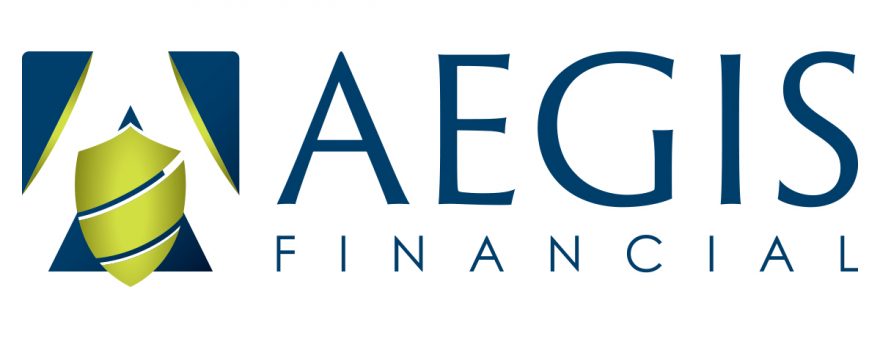In this Q2 recap: the economy measures the impact of the coronavirus threat; the stock market rises with help from a dovish Federal Reserve and a rebound in some economic indicators; oil prices and mortgage rates touch historic lows.
Quarterly Economic Update
A review of Q2 2020, Presented by Financial Advisor, Kevin Wilson
THE QUARTER IN BRIEF
As a new quarter begins, we look back on an eventful second quarter for households and investors – a quarter in which the economy took a mighty hit, while the stock market soared. Complying with stay-at-home orders, Americans abruptly cut back on discretionary spending, traveling, and commuting, resulting in a dire scenario for some industries. Unemployment rose as business revenue declined. Fundamental economic indicators saw big swings, and on one trading day, oil prices actually collapsed into negative territory. Homes became easier to finance; though, transactions declined. The Federal Reserve made proactive moves to try and foster a bit more economic stability. While Main Street quieted, Wall Street rallied, sensing that an economic rebound might be starting. The Standard & Poor’s 500 gained 19.95% for the quarter.1
DOMESTIC ECONOMIC HEALTH
The economy was certainly thrown for a loop this spring. Statistically speaking, some of the numbers were startling. Others were not as bad as some analysts thought they would be.
As workers were laid off, the jobless rate went north. The April employment report from the Bureau of Labor Statistics showed unemployment at 14.7% in March, with 78.3% of this population being furloughed with the potential to return to their jobs. May’s report showed a record monthly job gain, as nonfarm payrolls swelled with more than 2.5 million net new hires in April; the jobless rate fell to 13.3%. As the May numbers went public, however, the BLS admitted it probably undercounted the furloughed in April and that unemployment likely topped 16% in the fourth month of the year. The U-6 unemployment rate, which also counts part-time workers and discouraged job seekers, reached 21.2% in May.2
Many Americans received an economic stimulus from the federal government this spring, an Economic Impact Payment of up to $1,200, resulting from the passage of the Coronavirus Aid, Relief, and Economic Security (CARES) Act. Will there be another? With the current $600 monthly boost to unemployment insurance slated to fade away at the end of July, a decision on a second stimulus payment could happen in the third quarter.3
The stay-at-home orders hurt consumer spending and retail sales, but there was also a comeback. Personal spending weakened 12.6% in April, while retail sales slumped 14.7%. May’s numbers were different: with help from states relaxing stay-at-home orders, personal spending rose 8.2%, and retail sales advanced 17.7%.4
Americans definitely put more of their money in the bank during Q2, or at least, under the mattress. The personal savings rate, already up to 12.7% in March, increased to a record 33.0% in April. It was still at 23.2% in May.5
The Conference Board’s monthly Consumer Confidence Index stayed under 90 in the first two months of Q2 before staging a June rebound. The gauge came in at 85.7 in April, 85.9 in May, and 98.1 in June. The University of Michigan’s Consumer Sentiment Index never cracked 80. It displayed an April reading of 71.8, a May reading of 72.3, and a June mark of 78.1.6,7
Monthly reports from the Institute for Supply Management found that the service sector had contracted sharply at the start of spring along with manufacturing. ISM’s Purchasing Managers Index for service businesses came in at 41.8 for April and 45.4 for May; any number under 50 indicates reduction rather than growth. The Institute’s factory PMI showed similar numbers: 41.5 in April, 43.1 for May.8
Amid all these developments, the Federal Reserve remained proactive. With short-term interest rates back near zero, the central bank used other tools to try to help the economy and send dovish signals to financial markets.
In their June 10 policy statement, Fed officials pledged to increase their purchases of Treasury notes and mortgage-linked securities in the “coming months.” During each month of Q2, the Fed bought $80 billion of the former and $40 billion of the latter. On June 15, following up on a provision of the CARES Act, the Fed announced that it was ready to build a portfolio of investment-grade corporate bonds, as a nod to big businesses dealing with financial anxieties. The median 2020 forecast of Fed policymakers now projects 9.3% joblessness by the end of the year and gross domestic product (GDP) retreating 6.5% for 2020. Most Fed officials now think short-term interest rates will remain at historic lows into 2022.9,10
Last month, the private-sector National Bureau of Economic Research, a respected arbiter of U.S. economic cycles, stated that America’s ten-and-a-half-year economic expansion had ended. By its analysis, a recession had begun in February.3
GLOBAL ECONOMIC HEALTH
During April, the International Monetary Fund forecast the global economy to shrink by 3.0% in 2020. In June, it estimated the economic damage would be worse. The IMF’s chief economist, Gita Gopinath, termed the coronavirus pandemic a crisis “unlike anything the world has seen before,” one that could send both developed and emerging economies simultaneously into recession for the first time since the 1930s. Gopinath did state that “pent-up consumer demand” for goods and services might hasten a global rebound.11
China’s closely watched manufacturing industry contracted slightly in April, but expanded again in May, at least by the measure of the Caixin/Markit Manufacturing Purchasing Managers Index. The private survey showed a factory PMI reading of 49.4 in April, then improvement to 50.7 a month later. China’s official factory PMI displayed a 50.8 mark for April, a 50.6 reading for May, and a 50.9 mark for June.4,12
The European Central Bank made a major policy decision on June 4, nearly doubling the amount of its current monthly bond purchases to €1.35 trillion for at least the next 12 months. Seventy-six percent of European economists in a June Reuters poll believed the ECB would make further policy moves this year, and 56% felt that the bank would expand the scope of its bond-buying to an even greater degree. In addition, the European Commission proposed creating a €750 billion recovery fund to help eurozone nations ride through economic challenges.13
WORLD MARKETS
The MSCI EAFE Index (a benchmark for developed equity markets in Europe and the Asia-Pacific region) and the MSCI Emerging Markets Index posted double-digit gains in the quarter; although, they were still down year-to-date as June ended. The EAFE rose 14.17% in three months; the Emerging Markets, 17.27%.14
A quick look across the world reveals many other climbs for stock indices. Three-month gains of 10% or more were common this spring. For example, Russia’s RTS soared 26.51%, while Germany’s DAX jumped 25.42%. France’s CAC 40 rose 12.73%; Spain’s IBEX 35, 8.58%. Away from Europe, Australia’s All Ordinaries gained 15.54%, and South Korea’s Kospi, 22.78%. Japan’s Nikkei 225 increased 16.78%; India’s Nifty 50, 24.40%. China’s Shanghai Composite and Hong Kong’s Hang Seng both saw smaller gains: the former benchmark rose 8.64%; the latter, 5.40%. Argentina’s Merval improved 67.54%; Brazil’s Bovespa, 30.38%.15
COMMODITIES MARKETS
April 20 was a historic day in commodities trading. With a May contract expiring and demand for oil suddenly drying up, the price of West Texas Intermediate (WTI) crude oil dropped more than 300% in a single trading session, sliding from $17.85 down to an all-time low of -$37.63 at close. Oil quickly rebounded from this aberration. By the end of the quarter, a barrel of WTI crude was worth $39.70. The commodity gained 32.11% across the three months, ending in June. RBOB gasoline made an even greater advance, gaining 57.37% in the same period. Natural gas was a Q2 loser, with prices slipping 12.67%.16,17
Key precious and semiprecious metals also posted quarterly gains. Silver jumped 23.57%, and gold improved 7.65%. Silver was worth $18.06 an ounce when the quarter ended; gold, $1,781.20 an ounce. Copper futures advanced 23.45%; platinum futures, 11.62%. Palladium futures pulled back 11.51%. The U.S. Dollar Index lost 1.04%.17
Agricultural futures were a mixed bag. Cotton notched a 3-month advance of 11.48%, while coffee retreated 14.63%. Orange juice improved 7.61%, and sugar, 4.81%. Wheat slumped 12.62%; corn, 7.65%. Soybeans fell 1.74%; cocoa, 1.63%. Lumber had one of the quarter’s biggest gains, up 32.35%.17
REAL ESTATE
Mortgages grew cheaper as declining inflation pressure influenced long-term interest rates. The average interest on a 30-year, fixed-rate home loan fell to a historic low of 3.13%, as reported in Freddie Mac’s June 18 Primary Mortgage Market Survey. That was where it remained in the last PMMS of the quarter, released on June 25. The average interest rate on the 15-year, fixed-rate mortgage also trended downward, landing at 2.59% in the June 25 PMMS.18
30-year, and 15-year, fixed-rate mortgages are conventional home loans generally featuring a limit of $510,400 ($765,600 in high-cost areas) that meet the lending requirements of Fannie Mae and Freddie Mac, but they are not mortgages guaranteed or insured by any government agency. Private mortgage insurance, or PMI, is required for any conventional loan with less than a 20% down payment.
Stay-at-home orders and COVID-19 fears disrupted existing home sales. The National Association of Realtors announced a 17.8% fall for residential resales in April (following an 8.5% slip in March). In May, sales fell another 9.7%. The spike in joblessness thinned the number of potential buyers, and analysts wondered if sellers might soon reduce their asking prices. The inventory of existing homes for sale grew, at last, increasing 6.2% between April and May. New home sales were down 5.2% in April, but improved 16.6% in May, according to the Census Bureau.4,19
Homebuilding activity slowed as the quarter began, then picked up. Housing starts dipped 26.4% in April and improved 4.3% in May. In another positive development, building permits for upcoming projects increased by 14.4% in May.20
LOOKING BACK, LOOKING FORWARD
The rally that started in late March continued in the second quarter. Traders were encouraged by better-than-expected earnings in certain industries, positive news about potential COVID-19 treatments and vaccines, and the commitment of the Federal Reserve to address turbulence in the economy and the markets.
All three of the big Wall Street benchmarks recorded their best quarters of the century. As you look at the table below, note the difference in their year-to-date performance. The Nasdaq Composite closed at 10,020.35 on June 10, reaching a new milestone. The Nasdaq ended Q2 at 10,058.77; the S&P, at 3,100.29; the Dow Jones Industrial Average, at 25,812.88.1,21
| MARKET INDEX |
Y-T-D CHANGE |
Q2 CHANGE |
Q1 CHANGE |
| DJIA |
-9.55 |
+17.77 |
-23.20 |
| NASDAQ |
+12.11 |
+30.63 |
-14.18 |
| S&P 500 |
-4.04 |
+19.95 |
-20.00 |
|
|
|
|
| YIELD |
6/30 RATE |
3 MO AGO |
1 YR AGO |
| 10-YR TIPS |
0.66 |
0.70 |
2.03 |
Sources: cnbc.com, cnn.com, treasury.gov – 6/30/20
Indices are unmanaged, do not incur fees or expenses, and cannot be invested into directly. These returns do not include dividends. 10-year Treasury yield = projected return at maturity given expected inflation.
As this quarter starts, investors are wondering… is the worst of this recession now behind us? A quick answer may prove elusive. The third quarter may bring more signals that Main Street is bouncing back, but it could also bring a reversal of economic momentum if states continue to halt or reverse phases of opening. For the market to climb higher off of its Q2 melt-up, earnings and economic indicators have to keep showing improvement or least stability. The same goes for COVID-19 case counts. If they keep rising this summer, the bulls could easily be held back.
Q U O T E O F T H E Q U A R T E R
“The best way to predict the future is to invent it.”
ALAN kay
AEGIS Financial may be reached at 920.233.4650 or info@aegs4me.com aegis4me.com
Know someone who could use information like this?
Please feel free to send us their contact information via phone or email. (Don’t worry – we’ll request their permission before adding them to our mailing list.)
Investment Advisory Services are offered through AEGIS Financial, registered investment adviser.
Securities offered by Registered Representatives through Private Client Services, Member FINRA/SIPC. Advisory products and services offered through AEGIS Financial, a Registered Investment Advisor. Private Client Services and AEGIS Financial are unaffiliated entities.
AEGIS Financial does not accept orders and/or instructions regarding your account by e-mail, voice mail, fax or any alternate method. Transactional details do not supersede normal trade confirmations or statements. E-mail sent through the Internet is not secure or confidential. AEGIS Financial reserves the right to review, monitor, and archive all e-mail sent and received. Any information provided in this e-mail has been prepared from sources believed to be reliable but is not guaranteed by AEGIS Financial and is not a complete summary or statement of all available data necessary for making an investment decision. Any information provided is for informational purposes only and does not constitute a recommendation. AEGIS Financial and its employees may own options, rights or warrants to purchase any of the securities mentioned in e-mail. This e-mail is intended only for the person or entity to which it is addressed and may contain confidential and/or privileged material. This email transmission and any documents, files or previous email messages attached to it may contain information that is confidential or legally privileged. If you are not the intended recipient, you are hereby notified that you must not read this transmission and that any disclosure, copying, printing, distribution, or any action or omission of this transmission is strictly prohibited. If you have received this transmission in error, please immediately notify the sender by telephone at 920-233-4650 or return and delete the original transmission and its attachments without reading or saving in any manner.
This material was prepared by MarketingPro, Inc., and does not necessarily represent the views of the presenting party, nor their affiliates. The information herein has been derived from sources believed to be accurate. Please note – investing involves risk, and past performance is no guarantee of future results. Investments will fluctuate and when redeemed may be worth more or less than when originally invested. This information should not be construed as investment, tax or legal advice and may not be relied on for the purpose of avoiding any Federal tax penalty. This is neither a solicitation nor recommendation to purchase or sell any investment or insurance product or service, and should not be relied upon as such. All market indices discussed are unmanaged and are not illustrative of any particular investment. Indices do not incur management fees, costs, or expenses. Investors cannot invest directly in indices. All economic and performance data is historical and not indicative of future results. The Dow Jones Industrial Average is a price-weighted index of 30 actively traded blue-chip stocks. The NASDAQ Composite Index is a market-weighted index of all over-the-counter common stocks traded on the National Association of Securities Dealers Automated Quotation System. The Standard & Poor’s 500 (S&P 500) is a market-cap weighted index composed of the common stocks of 500 leading companies in leading industries of the U.S. economy. NYSE Group, Inc. (NYSE:NYX) operates two securities exchanges: the New York Stock Exchange (the “NYSE”) and NYSE Arca (formerly known as the Archipelago Exchange, or ArcaEx®, and the Pacific Exchange). NYSE Group is a leading provider of securities listing, trading and market data products and services. The New York Mercantile Exchange, Inc. (NYMEX) is the world’s largest physical commodity futures exchange and the preeminent trading forum for energy and precious metals, with trading conducted through two divisions – the NYMEX Division, home to the energy, platinum, and palladium markets, and the COMEX Division, on which all other metals trade. The CAC-40 Index is a narrow-based, modified capitalization-weighted index of 40 companies listed on the Paris Bourse. The DAX 30 is a Blue Chip stock market index consisting of the 30 major German companies trading on the Frankfurt Stock Exchange. The FTSE 100 Index is a share index of the 100 most highly capitalized companies listed on the London Stock Exchange. BSE Sensex or Bombay Stock Exchange Sensitivity Index is a value-weighted index composed of 30 stocks that started January 1, 1986. Nikkei 225 (Ticker: ^N225) is a stock market index for the Tokyo Stock Exchange (TSE). The Nikkei average is the most watched index of Asian stocks. The Hang Seng Index is a free float-adjusted market capitalization-weighted stock market index that is the main indicator of the overall market performance in Hong Kong. The All Ordinaries (XAO) is considered a total market barometer for the Australian stock market and contains the 500 largest ASX-listed companies by way of market capitalization. The SSE Composite Index is an index of all stocks (A shares and B shares) that are traded at the Shanghai Stock Exchange. The S&P/TSX Composite Index is an index of the stock (equity) prices of the largest companies on the Toronto Stock Exchange (TSX) as measured by market capitalization. The MSCI Emerging Markets Index is a float-adjusted market capitalization index consisting of indices in more than 25 emerging economies. The MSCI World Index is a free-float weighted equity index that includes developed world markets and does not include emerging markets. The CBOE Volatility Index® is a key measure of market expectations of near-term volatility conveyed by S&P 500 stock index option prices. The S&P SmallCap 600® measures the small-cap segment of the U.S. equity market. The Russell 2000 Index is a small-cap stock market index of the bottom 2,000 stocks in the Russell 3000 Index. Additional risks are associated with international investing, such as currency fluctuations, political and economic instability and differences in accounting standards. This material represents an assessment of the market environment at a specific point in time and is not intended to be a forecast of future events, or a guarantee of future results. MarketingPro, Inc. is not affiliated with any person or firm that may be providing this information to you. The publisher is not engaged in rendering legal, accounting or other professional services. If assistance is needed, the reader is advised to engage the services of a competent professional.
CITATIONS:
1 – CNBC.com, June 30, 2020
2 – CNBC.com, June 5, 2020
3 – CNET.com, June 18, 2020
4 – Investing.com, June 30, 2020
5 – Fred.StLouisFed.org, June 30, 2020
6 – Investing.com, June 30, 2020
7 – Briefing.com, June 26, 2020
8 – Institute for Supply Management, June 3, 2020
9 – Yahoo! Finance, June 10, 2020
10 – Marketplace, June 16, 2020
11 – CNBC.com, June 16, 2020
12 – CNBC.com, June 1, 2020
13 – Reuters.com, June 12, 2020
14 – MSCI.com, June 30, 2020
15 – Barchart.com, June 30, 2020
16 – Global Risk Insights, May 29, 2020
17 – Barchart.com, June 30, 2020
18 – FreddieMac.com, June 30, 2020
19 – TradingEconomics.com, June 30, 2020
20 – CNBC.com, June 17, 2020
21 – Wall Street Journal, June 30, 2020











